-
 Bitcoin
Bitcoin $119000
0.17% -
 Ethereum
Ethereum $3664
-2.12% -
 XRP
XRP $3.229
-7.77% -
 Tether USDt
Tether USDt $1.001
0.02% -
 BNB
BNB $783.2
-1.48% -
 Solana
Solana $191.3
-5.26% -
 USDC
USDC $1.000
0.03% -
 Dogecoin
Dogecoin $0.2450
-7.74% -
 TRON
TRON $0.3115
-1.61% -
 Cardano
Cardano $0.8229
-6.80% -
 Hyperliquid
Hyperliquid $44.17
-2.93% -
 Stellar
Stellar $0.4343
-7.23% -
 Sui
Sui $3.792
-4.09% -
 Chainlink
Chainlink $18.38
-5.73% -
 Hedera
Hedera $0.2491
-7.79% -
 Bitcoin Cash
Bitcoin Cash $518.1
-1.51% -
 Avalanche
Avalanche $24.13
-5.84% -
 Litecoin
Litecoin $113.9
-5.41% -
 UNUS SED LEO
UNUS SED LEO $8.974
-0.21% -
 Shiba Inu
Shiba Inu $0.00001400
-7.98% -
 Toncoin
Toncoin $3.215
-2.09% -
 Ethena USDe
Ethena USDe $1.001
0.03% -
 Polkadot
Polkadot $4.178
-6.84% -
 Uniswap
Uniswap $10.38
-3.05% -
 Monero
Monero $317.8
-1.85% -
 Bitget Token
Bitget Token $4.733
-1.94% -
 Pepe
Pepe $0.00001293
-8.20% -
 Dai
Dai $1.000
0.02% -
 Aave
Aave $292.8
-4.74% -
 Bittensor
Bittensor $430.1
-3.67%
The point of adding positions when the volume shrinks and the gap is stepped back after the gap is jumped
A gap jump in crypto signals strong momentum; when volume shrinks and price steps back partially, it may indicate a pause before trend continuation, not reversal.
Jul 24, 2025 at 04:56 am
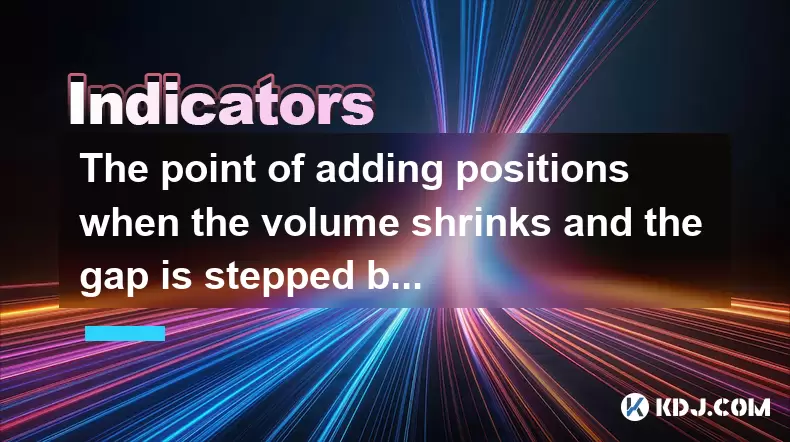
Understanding the Gap Jump Phenomenon in Cryptocurrency Trading
In cryptocurrency trading, a gap jump occurs when the price of a digital asset opens significantly higher or lower than its previous closing price, creating a visible gap on the chart. This often happens due to sudden news, market sentiment shifts, or large institutional orders executed during off-hours. When a gap jump appears on a candlestick chart, it indicates a strong momentum shift. Traders closely monitor these gaps because they can signal the beginning of a new trend or a temporary overreaction. A bullish gap jump happens when the price surges upward, while a bearish gap jump reflects a sharp drop. The key is not just identifying the gap but understanding how price action behaves after the jump, especially when volume begins to shrink.
Volume Contraction After a Gap Jump
After a gap jump, it’s common for trading volume to decrease, indicating that the initial surge of buying or selling pressure is cooling down. A shrinking volume after a gap suggests that the momentum behind the move is weakening. This does not necessarily mean a reversal is imminent, but it does signal caution. When volume contracts, it often reflects a lack of conviction among traders. In technical analysis, this phase is critical because it sets the stage for potential consolidation or a continuation of the trend. Traders watch for confirmation—such as a breakout on renewed volume or a rejection at key levels—before making decisions. The appearance of lower volume after a strong move can be a clue that the market is pausing to absorb the previous action.
What Is a Stepped Back Gap?
A stepped back gap refers to a scenario where, after a gap jump, the price retraces slightly and fills part of the gap, but not entirely. This retraction is not a full reversal; instead, it acts as a pullback or consolidation phase. The term "stepped back" implies a measured retreat, often supported by reduced selling or buying pressure. For instance, if Bitcoin gaps up from $30,000 to $32,000 and then pulls back to $31,000 on low volume, the $1,000 gap is partially filled. This partial retracement is significant because it may represent a healthy correction before the trend resumes. The stepped back area often becomes a support zone if the original trend was bullish, or resistance if bearish.
Strategic Position Addition During Volume Shrinkage
Adding positions when volume shrinks after a gap jump and the price steps back is a strategy used by experienced traders to enter or increase exposure at favorable levels. The logic lies in confirming that the initial momentum hasn’t reversed, but rather paused. When traders observe a gap jump followed by shrinking volume and a stepped back price, they assess whether the underlying trend remains intact. If key support levels hold and no reversal patterns emerge, adding to a long position (in a bullish scenario) or initiating a short (in a bearish one) can be justified. This approach relies on patience and confirmation. The added position should be sized appropriately to manage risk.
- Monitor the price action after the gap to ensure it doesn’t close completely
- Confirm that volume is decreasing, not increasing on the pullback
- Identify key support or resistance levels near the stepped back zone
- Use limit orders to enter at precise price points within the stepped back range
- Set stop-loss orders just beyond the stepped back zone to protect against false breakouts
Technical Indicators to Confirm the Setup
To enhance the reliability of adding positions during this phase, traders often combine price action with technical indicators. The Relative Strength Index (RSI) can help determine if the asset is overbought or oversold after the gap. A return to neutral RSI levels during the stepped back phase may suggest balance is being restored. The Moving Average Convergence Divergence (MACD) can show whether momentum is still aligned with the original trend. Additionally, volume-based indicators like On-Balance Volume (OBV) help confirm whether the shrinking volume reflects distribution or accumulation. Traders may also use horizontal support/resistance lines or Fibonacci retracement levels to pinpoint where the stepped back price might find equilibrium.
Risk Management in Gap-Based Position Adding
While the strategy of adding positions during volume contraction and stepped back gaps can yield high rewards, it carries inherent risks. The primary danger is mistaking a temporary pause for a continuation signal when, in fact, a reversal is forming. To mitigate this, strict risk management protocols must be followed. Position sizing should be conservative, especially when entering during a pullback. Stop-loss orders are essential and should be placed beyond the stepped back zone to avoid being stopped out by minor volatility. Traders should also avoid averaging into losing positions without confirmation. Using a risk-reward ratio of at least 1:2 ensures that potential gains justify the exposure. Monitoring order book depth on exchanges can also provide insight into whether large orders are supporting the current price level.
Frequently Asked Questions
Q: How do I distinguish between a stepped back gap and a full gap fill?
A stepped back gap involves a partial retracement of the gap, where price moves back into the gap zone but doesn’t close it completely. A full gap fill occurs when price returns to the level where the gap began, erasing the entire gap. The distinction is critical—stepped back gaps often precede trend continuation, while full gap fills may indicate weakening momentum or reversal.
Q: Can this strategy be applied to all cryptocurrencies?
Yes, but with caveats. High-liquidity assets like Bitcoin and Ethereum tend to exhibit clearer gap patterns due to deeper markets. Low-cap altcoins may show erratic gaps caused by manipulation or thin order books, making the strategy less reliable. Always assess liquidity and trading volume before applying this method.
Q: What timeframes are best for identifying stepped back gaps?
The 4-hour and daily charts are most effective for spotting meaningful gap jumps and subsequent volume changes. Shorter timeframes like 5-minute or 15-minute charts may show too much noise, leading to false signals. Higher timeframes provide clearer context for trend direction and volume behavior.
Q: Should I add positions immediately when volume starts shrinking?
No. Wait for confirmation that the price has stabilized within the stepped back zone and that no reversal candlestick patterns (like doji, engulfing, or hammers) appear. Entering prematurely without confirmation increases the risk of catching a falling knife or fading momentum.
Disclaimer:info@kdj.com
The information provided is not trading advice. kdj.com does not assume any responsibility for any investments made based on the information provided in this article. Cryptocurrencies are highly volatile and it is highly recommended that you invest with caution after thorough research!
If you believe that the content used on this website infringes your copyright, please contact us immediately (info@kdj.com) and we will delete it promptly.
- XRP, Solana, and Institutional Adoption: A New Era for Crypto?
- 2025-07-24 11:10:12
- Dogecoin, Remittix, and Crypto Protocols: The Evolution of Digital Finance
- 2025-07-24 10:50:12
- BlockDAG, Hedera, and Stellar: Charting the Course for Crypto's Future
- 2025-07-24 10:50:12
- BlockDAG's No-Vesting Edge: Can It Outpace Cardano's Price?
- 2025-07-24 11:10:12
- South Korea's Credit Card Industry Embraces Stablecoin Regulations: A New Era?
- 2025-07-24 10:30:12
- Bitcoin, SHIB, and Institutional Momentum: Decoding Crypto's 2025 Trajectory
- 2025-07-24 11:15:12
Related knowledge
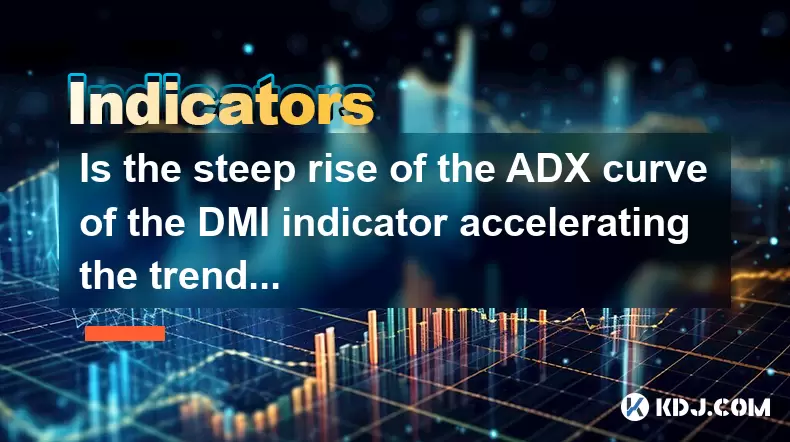
Is the steep rise of the ADX curve of the DMI indicator accelerating the trend or about to reverse?
Jul 24,2025 at 11:15am
Understanding the DMI Indicator and Its ComponentsThe Directional Movement Index (DMI) is a technical analysis tool used to identify the presence and ...
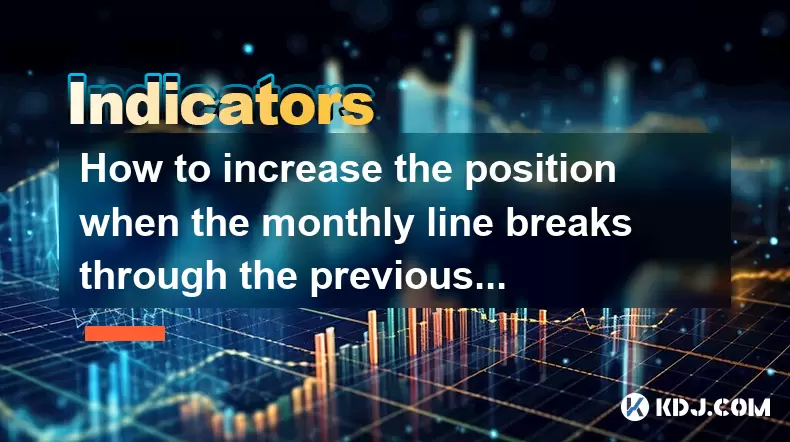
How to increase the position when the monthly line breaks through the previous high + the weekly KD golden cross + the daily line gaps?
Jul 24,2025 at 09:42am
Understanding the Monthly Line Breakout Beyond Previous HighWhen the monthly line breaks through the previous high, it signals a powerful shift in lon...
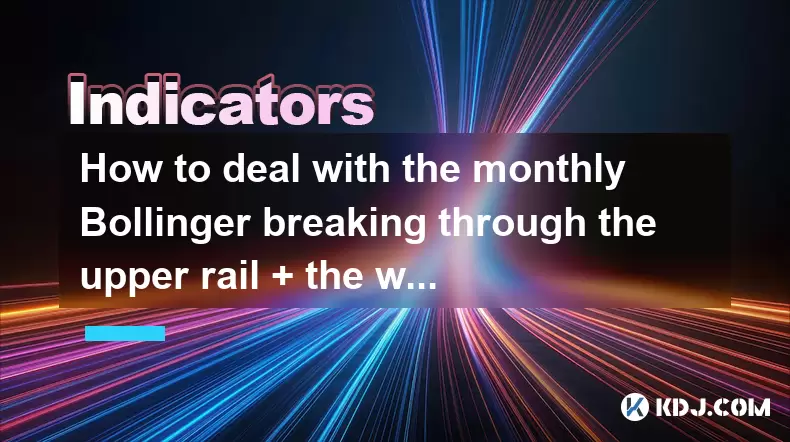
How to deal with the monthly Bollinger breaking through the upper rail + the weekly RSI overbought + the daily line's long negative correction?
Jul 24,2025 at 08:42am
Understanding the Bollinger Bands Breakout on the Monthly ChartWhen the monthly Bollinger Bands experience a breakout above the upper rail, it signals...
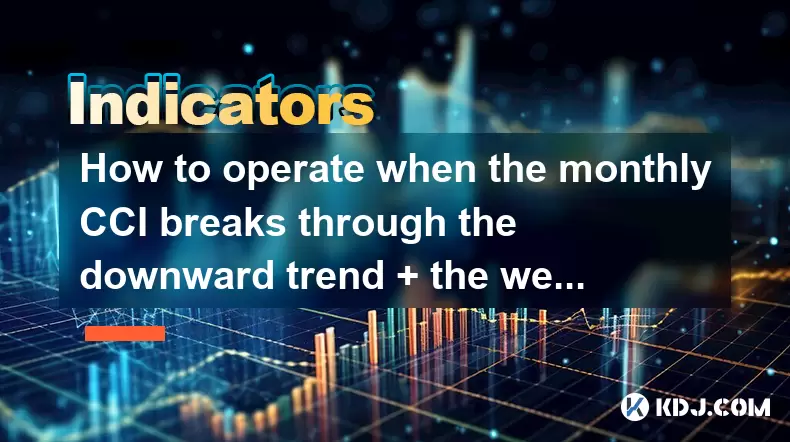
How to operate when the monthly CCI breaks through the downward trend + the weekly line's three consecutive positives + the daily line's shrinking volume and stepping back?
Jul 24,2025 at 09:00am
Understanding the CCI Indicator and Its Role in Trend AnalysisThe Commodity Channel Index (CCI) is a momentum-based oscillator used to identify overbo...
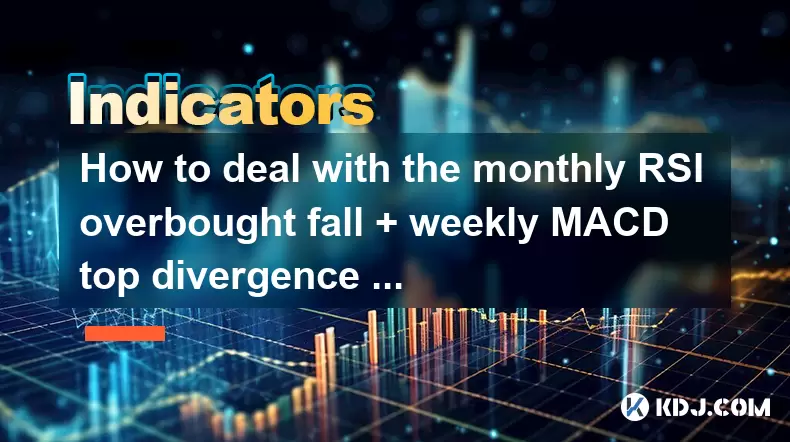
How to deal with the monthly RSI overbought fall + weekly MACD top divergence + daily line falling below the 30-day line?
Jul 24,2025 at 12:01pm
Understanding the Monthly RSI Overbought SignalWhen the monthly RSI enters overbought territory, it indicates that the cryptocurrency has experienced ...
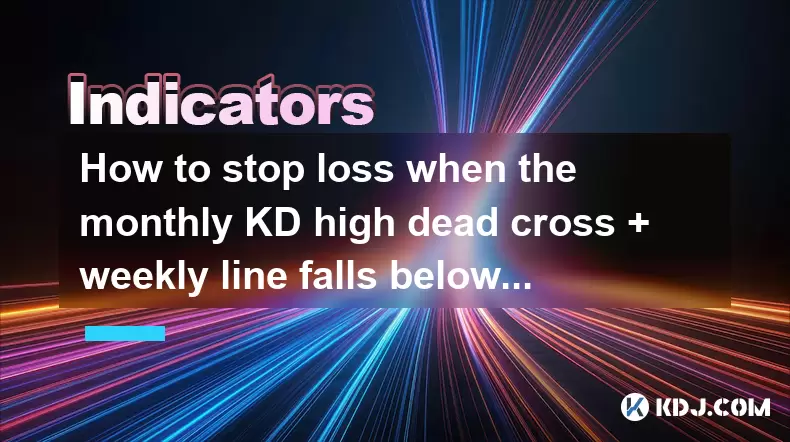
How to stop loss when the monthly KD high dead cross + weekly line falls below the 20-week line + daily line pulls back on the 5-day line?
Jul 24,2025 at 07:00am
Understanding the Indicators: KD, Weekly, and Daily Moving AveragesWhen traders analyze cryptocurrency price movements, they often rely on technical i...

Is the steep rise of the ADX curve of the DMI indicator accelerating the trend or about to reverse?
Jul 24,2025 at 11:15am
Understanding the DMI Indicator and Its ComponentsThe Directional Movement Index (DMI) is a technical analysis tool used to identify the presence and ...

How to increase the position when the monthly line breaks through the previous high + the weekly KD golden cross + the daily line gaps?
Jul 24,2025 at 09:42am
Understanding the Monthly Line Breakout Beyond Previous HighWhen the monthly line breaks through the previous high, it signals a powerful shift in lon...

How to deal with the monthly Bollinger breaking through the upper rail + the weekly RSI overbought + the daily line's long negative correction?
Jul 24,2025 at 08:42am
Understanding the Bollinger Bands Breakout on the Monthly ChartWhen the monthly Bollinger Bands experience a breakout above the upper rail, it signals...

How to operate when the monthly CCI breaks through the downward trend + the weekly line's three consecutive positives + the daily line's shrinking volume and stepping back?
Jul 24,2025 at 09:00am
Understanding the CCI Indicator and Its Role in Trend AnalysisThe Commodity Channel Index (CCI) is a momentum-based oscillator used to identify overbo...

How to deal with the monthly RSI overbought fall + weekly MACD top divergence + daily line falling below the 30-day line?
Jul 24,2025 at 12:01pm
Understanding the Monthly RSI Overbought SignalWhen the monthly RSI enters overbought territory, it indicates that the cryptocurrency has experienced ...

How to stop loss when the monthly KD high dead cross + weekly line falls below the 20-week line + daily line pulls back on the 5-day line?
Jul 24,2025 at 07:00am
Understanding the Indicators: KD, Weekly, and Daily Moving AveragesWhen traders analyze cryptocurrency price movements, they often rely on technical i...
See all articles

























































































